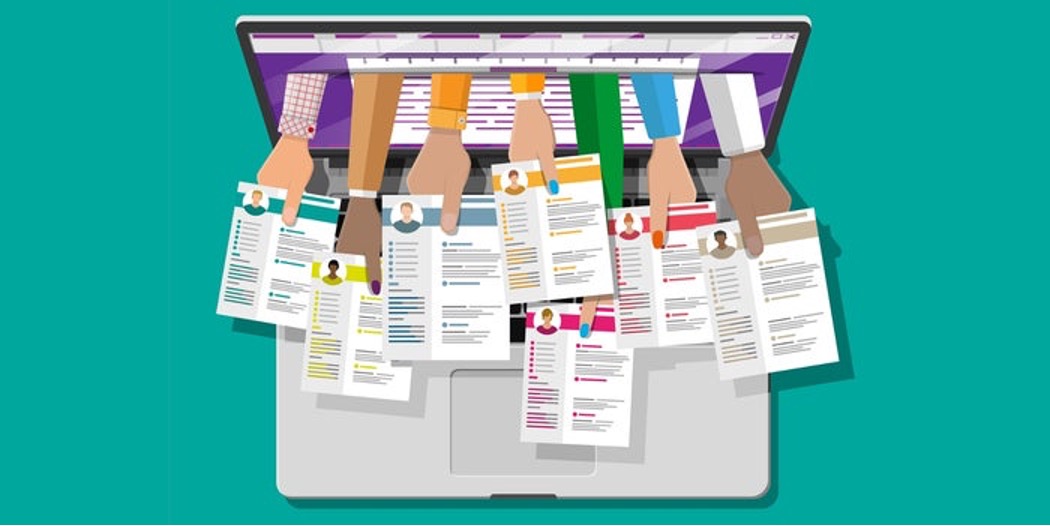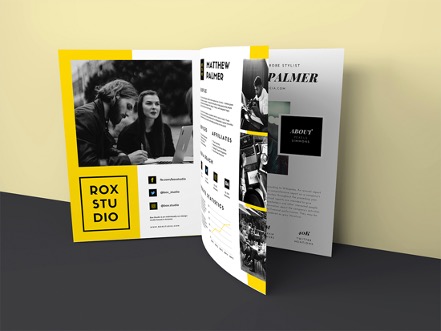Are you struggling to create a press kit that truly stands out? Look no further! In this article, we will guide you through the process of creating an impressive media package that will grab the attention of journalists, bloggers, and influencers. A well-crafted press kit is essential for any business or brand looking to make a splash in the media. It not only provides essential information but also showcases your brand’s unique story and offerings. From your company’s history to product images and press releases, a comprehensive press kit is a one-stop-shop for media professionals looking to feature your brand.
But how do you create a press kit that gets noticed?
We’ll cover everything you need to know, from choosing the right format to incorporating captivating visuals, compelling copy, and up-to-date contact information. We’ll also provide you with tips and tricks to optimize your press kit for search engines, increasing your chances of attracting media attention. Don’t miss out on the opportunity to make a lasting impression. Get ready to create an impressive media package that will set your brand apart from the competition!
In this article, we will look at:
- Earned media vs. other forms of media
- The impact of different media
- What to include in a press kit to gain media coverage
Earned media vs. other forms of media
Companies need to use effective digital marketing strategies that will benefit their business to gain visibility for their brand. Content like press releases, press kits, and other newsworthy articles are what draw audiences in. Still, it is also the channels companies use that determine whether they reach their target audience and drive sales. Traditionally, newspapers, television, and paid ads were the way to go. Channels like social media channels, blogs, and websites are more effective ways to obtain information in the digital age. By understanding the different types of media content and channels, companies can achieve adequate media coverage.
Owned media, which includes websites, blog sites, and social media channels, is great for a company because it gives them complete control of their messaging. Even so, earned media is the ultimate goal for companies who want to gain publicity and exposure from methods other than paid advertising. Public relations is all about developing mutually beneficial relationships with media professionals to promote a brand.
Earned media is all the content and chatter revolving around a brand or product that has been created by someone else and published on channels other than a company’s owned channels. It can include press coverage, social media mentions, shares and retweets, product or company reviews, and blog posts written by someone outside the company. Earned media has proven more successful than other media because of its ability to increase visibility and reach of content and generate engagement. By having earned media, a company can build trust and credibility among their audiences through influencer and social media marketing.
Press coverage/social media
Earned media has managed to generate more success for companies, but companies should also use paid and owned media to establish their brand identity. Both media are quite simple to understand. Paid media consists of any marketing that a company pays for, including TV adverts, radio spots, and print advertising. On the other hand, owned media consists of content that a company personally creates and publishes on their own channels. With the shift to digital marketing, paid media has also turned to Pay Per Click (PPC) adverts to gain visibility through organic search results. While paid and owned media may not have the same level of success as earned media, they should still be used to showcase the company’s brand image and help spread the word.
 Companies should think of earned media as a way to generate visibility for their owned media. The combination of great content and solid organic rankings on multiple search engines is what sets companies apart from their competition. Brand content that is interesting, informative, and creative gives companies the ability to rank higher and puts them in a position to receive higher engagement and shares. Ultimately, all forms of earned media are motivated by genuine opinions and beliefs that surround a company and its content. This increases levels of trust faster than any other type of media.
Companies should think of earned media as a way to generate visibility for their owned media. The combination of great content and solid organic rankings on multiple search engines is what sets companies apart from their competition. Brand content that is interesting, informative, and creative gives companies the ability to rank higher and puts them in a position to receive higher engagement and shares. Ultimately, all forms of earned media are motivated by genuine opinions and beliefs that surround a company and its content. This increases levels of trust faster than any other type of media.How Pressfarm can help
Sometimes it can be challenging to know how to craft engaging content. With the help of PR and marketing professionals, companies can create content that will resonate better with their target audience and be visible to the digital world. PR agencies like Pressfarm work with companies to create newsworthy content and develop mutually beneficial relationships with media professionals. Their extensive database of over 1 million journalists gives companies the ability to find their perfect media match without having to sift through thousands of media contacts. In the current digital marketing landscape, Pressfarm’s PR experts also know how to increase a brand’s online visibility by helping them feature in relevant search results on multiple search engines.
What to include in a press kit to gain media coverage
Press kits and other media content are usually created to explain core facts about a company to media professionals in an organized and creative way. The whole point is to divulge all essential facts and information that a media professional would need to write a story about the brand. While content may depend on the brand, a press kit should contain materials and information that can be used by anyone who wants to create content related to the brand.
Previously, press kits would have been sent physically by post or delivered by hand because there wasn’t any other choice; these days, digital press kits have given companies the ability to easily update, change any part of the press kit to their liking, share links, and even monitor their visibility efforts through analytics.
Content may vary, but the basic parts are still the same. Let us look at the key elements that should go into a press kit to obtain earned media coverage. Previous research shows some essential data points that media professionals want to see when they receive a press kit. Press kits can include but are not limited to company history, where and the company was founded and by whom, previous press mentions, past clients, products/services, and leadership.
Let us dive into the finer details of what to include in your press kit.
1) A brief table of contents
Regardless of how it is formatted, a table of contents is beneficial to guide a reader through your press kit. By providing clear information about the press kit contents, companies give journalists and media outlets a chance to quickly find the information they are looking for without having to sift through everything.
2) The company story
Having a captivating story is essential when companies begin creating unique and creative content. This content is a way for companies to introduce themselves to their target audience. This is also the best place for businesses to share their strengths and motivations for starting the business and differentiate themselves from the competition.
This section of the press kit should answer who, what, where, when, why, and how. When trying to figure out brand messaging, another thing to remember is, all communication should be consistent and concise.
3) Products and services
Whatever stage a company is in their development cycle, they need to include their products/services in their press kit. Companies should outline the most important features and details. This includes pricing, where to purchase their products or services, and what sets them apart from the competition.
While not necessary, it can be helpful to include some FAQs that the company has addressed or anticipated, especially if it pertains to their industry, product, or service. This section helps make media professionals’ lives easier and may give them additional ideas for their content.

4) High-resolution images and visuals
Visuals can vary depending on the industry, but all graphic files should include high-resolution logos, product images, and headshots of key member of management. The objective of having visuals is to communicate clearly and creatively to the public before press kits are sent out to media professionals and target audiences. All files need to be optimized and media-ready so that they can be used as-is.
Suppose companies plan on allowing media professionals to use the images. In that case, they should either provide a link where they can download high-resolution copies, or they can add them to the press kit as downloadable files.
5) Contact information
Since a press kit is usually sent out to convince journalists to write a story, it is essential to provide all contact information for press inquiries and offer multiple ways for the journalist to reach the company. Make sure to include social media links because journalists and reporters will most likely look there to find additional information.
The thing to note: Companies should create a separate email address dedicated to the press. This will look more professional and be more appealing to media professionals than a generic email address.
6) Previous press coverage
Previous press coverage shows that other media outlets have noticed the brand and are keeping tabs on what they are doing. This makes other journalists and media outlets more inclined to create content and trust the company as a thought leader in their industry.
If a company chooses to include previous press releases in its press kit, then it needs to demonstrate value. In other words, there needs to be a clear purpose for adding each press release to the media kit. While it may be alright to add more than one press release, all press releases need to provide value. If a brand simply dumps all its press releases from the beginning of time into the press kit, then it will be time-consuming and laborious for a media professional to sift through the information and create a story.

7) Goal, mission, vision
Every press kit is designed to help a company or individual achieve a definite goal and gain adequate media coverage towards a brand. Whatever the purpose may be, it should be clearly stated in the press kit because it helps journalists and media outlets make a quick and intelligent decision about whether or not they want to write about the brand.
From an audience perspective, they are more likely to gravitate towards a transparent company that has their goals, mission, and vision clearly defined.
8) Testimonials and reviews
Adding customer testimonials or product reviews helps legitimize a business. It proves to media professionals and target audiences that existing customers approve of the products/services provided.
Case studies are also a powerful means for companies to communicate their value to audiences. For businesses that have had success with their previous efforts serving customers and clients, they should include their success stories, with the client’s permission, to establish more authority towards their brand. This will allow them to start connecting and building trust with potential customers and media professionals.
Conclusion
There is no denying that earned media has a considerable impact on the success of a company. Through earned media, companies can promote their brand while also establishing solid relationships with journalists and media outlets to reach their target audience. While it has a higher level of success than other forms of media, it results from a company’s paid and owned media efforts. By using all three, companies can obtain positive media coverage for their brand. Either by themselves or with the help of PR professionals, companies can create engaging content that fits their media matches and target audiences.


